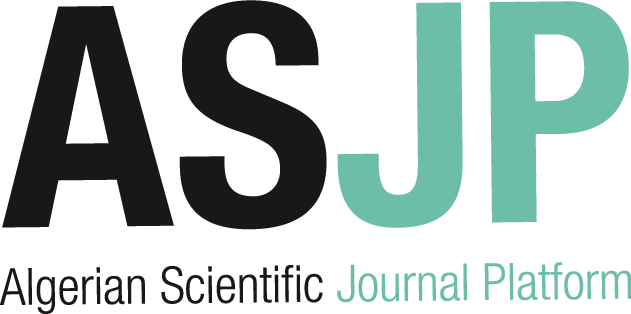[article]
| Titre : |
A novel lens-walled compound parabolic concentrator for photovoltaic applications |
| Type de document : |
texte imprimé |
| Auteurs : |
Yuehong Su, Auteur ; Gang Pei, Auteur ; Saffa B. Riffat, Auteur |
| Année de publication : |
2012 |
| Article en page(s) : |
07 p. |
| Note générale : |
solar energy |
| Langues : |
Anglais (eng) |
| Mots-clés : |
lens-walled CPC half acceptance angle concentration ratio optical efficiency |
| Index. décimale : |
621.47 |
| Résumé : |
A compound parabolic concentrator (CPC) is a nonimaging concentrator that can concentrate solar radiation coming within its acceptance angle. A low concentration CPC photovoltaic system has the advantages of reduced Photovoltaics (PVs) cell size, increased efficiency and stationary operation. The acceptance angle of a CPC is associated with its geometrical concentration ratio, by which the size of PV cell could be reduced. Truncation is a way to increase the actual acceptance angle of a mirror CPC, but it also reduces the geometrical concentration ratio. On the other hand, a solid dielectric CPC can have a much larger acceptance angle, but it has a larger weight. To overcome these drawbacks, this study presents a novel lens-walled CPC that has a thin lens attached to the inside of a common mirror CPC or has the lens to be mirror coated on its outside surface. The shape of the lens is formed by rotating the parabolic curves of a CPC by a small degree internally around the top end points of the curves. The refraction of the lens allows the lens-walled CPC to concentrate light from wider incidence angle. The commercial optical analysis software PHOTOPIA is used to verify the principle of the presented lens-walled CPC and examine its optical performance against the common CPCs. As an example, the simulation is aimed to evaluate whether a lens-walled CPC with a geometrical concentration ratio of 4 has any advantage over a common CPC with a geometrical concentration ratio of 2.5 in terms of actual acceptance angle, optical efficiency and optical concentration ratio. |
| DEWEY : |
621.47 |
| ISSN : |
0199-6231 |
| En ligne : |
http://asmedl.org/getabs/servlet/GetabsServlet?prog=normal&id=JSEEDO000134000002 [...] |
in Transactions of the ASME. Journal of solar energy engineering > Vol. 134 N° 2 (Mai 2012) . - 07 p.
[article] A novel lens-walled compound parabolic concentrator for photovoltaic applications [texte imprimé] / Yuehong Su, Auteur ; Gang Pei, Auteur ; Saffa B. Riffat, Auteur . - 2012 . - 07 p. solar energy Langues : Anglais ( eng) in Transactions of the ASME. Journal of solar energy engineering > Vol. 134 N° 2 (Mai 2012) . - 07 p.
| Mots-clés : |
lens-walled CPC half acceptance angle concentration ratio optical efficiency |
| Index. décimale : |
621.47 |
| Résumé : |
A compound parabolic concentrator (CPC) is a nonimaging concentrator that can concentrate solar radiation coming within its acceptance angle. A low concentration CPC photovoltaic system has the advantages of reduced Photovoltaics (PVs) cell size, increased efficiency and stationary operation. The acceptance angle of a CPC is associated with its geometrical concentration ratio, by which the size of PV cell could be reduced. Truncation is a way to increase the actual acceptance angle of a mirror CPC, but it also reduces the geometrical concentration ratio. On the other hand, a solid dielectric CPC can have a much larger acceptance angle, but it has a larger weight. To overcome these drawbacks, this study presents a novel lens-walled CPC that has a thin lens attached to the inside of a common mirror CPC or has the lens to be mirror coated on its outside surface. The shape of the lens is formed by rotating the parabolic curves of a CPC by a small degree internally around the top end points of the curves. The refraction of the lens allows the lens-walled CPC to concentrate light from wider incidence angle. The commercial optical analysis software PHOTOPIA is used to verify the principle of the presented lens-walled CPC and examine its optical performance against the common CPCs. As an example, the simulation is aimed to evaluate whether a lens-walled CPC with a geometrical concentration ratio of 4 has any advantage over a common CPC with a geometrical concentration ratio of 2.5 in terms of actual acceptance angle, optical efficiency and optical concentration ratio. |
| DEWEY : |
621.47 |
| ISSN : |
0199-6231 |
| En ligne : |
http://asmedl.org/getabs/servlet/GetabsServlet?prog=normal&id=JSEEDO000134000002 [...] |
|


 Ajouter le résultat dans votre panier Faire une suggestion Affiner la recherche
Ajouter le résultat dans votre panier Faire une suggestion Affiner la rechercheA novel lens-walled compound parabolic concentrator for photovoltaic applications / Yuehong Su in Transactions of the ASME. Journal of solar energy engineering, Vol. 134 N° 2 (Mai 2012)











